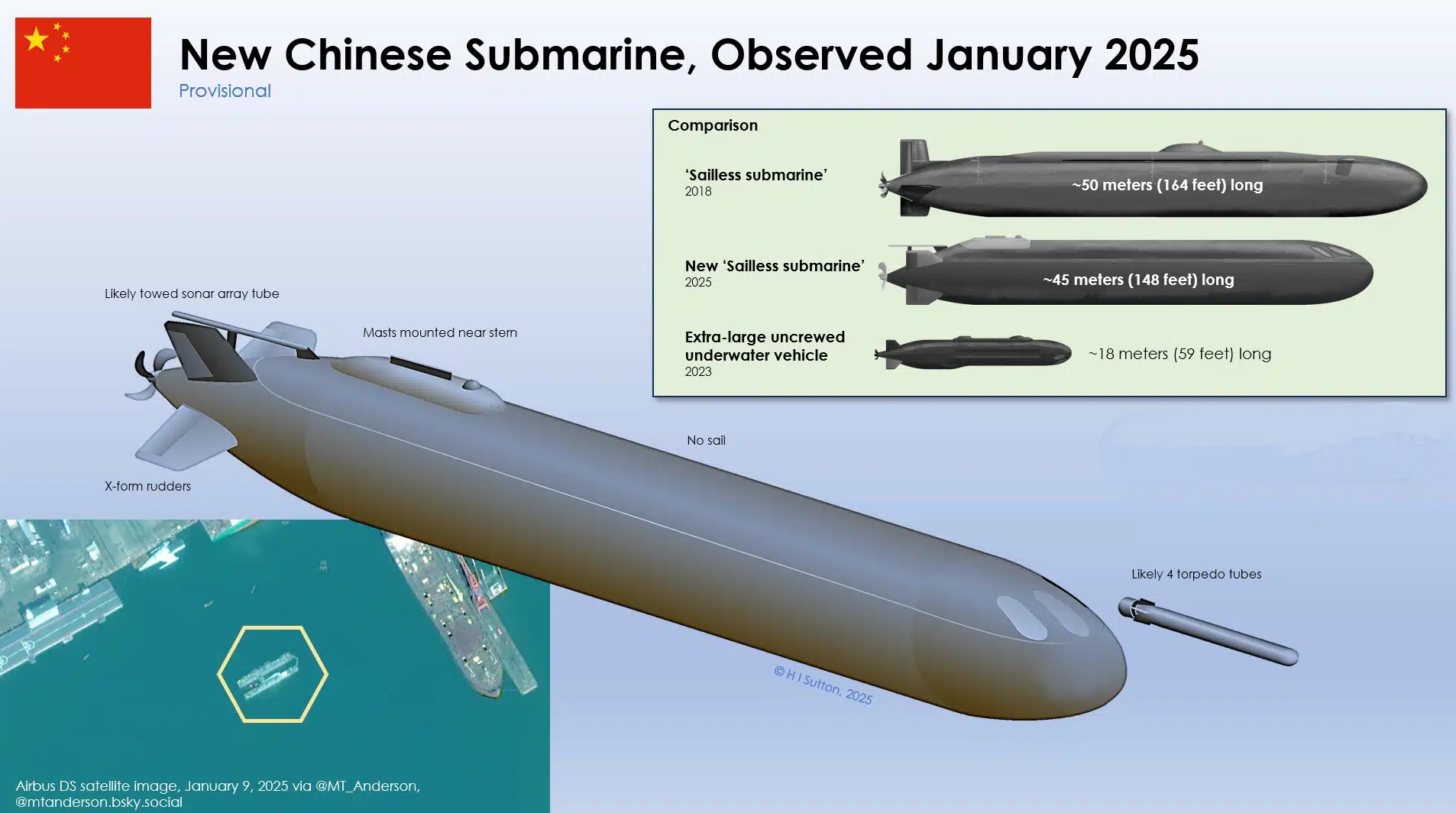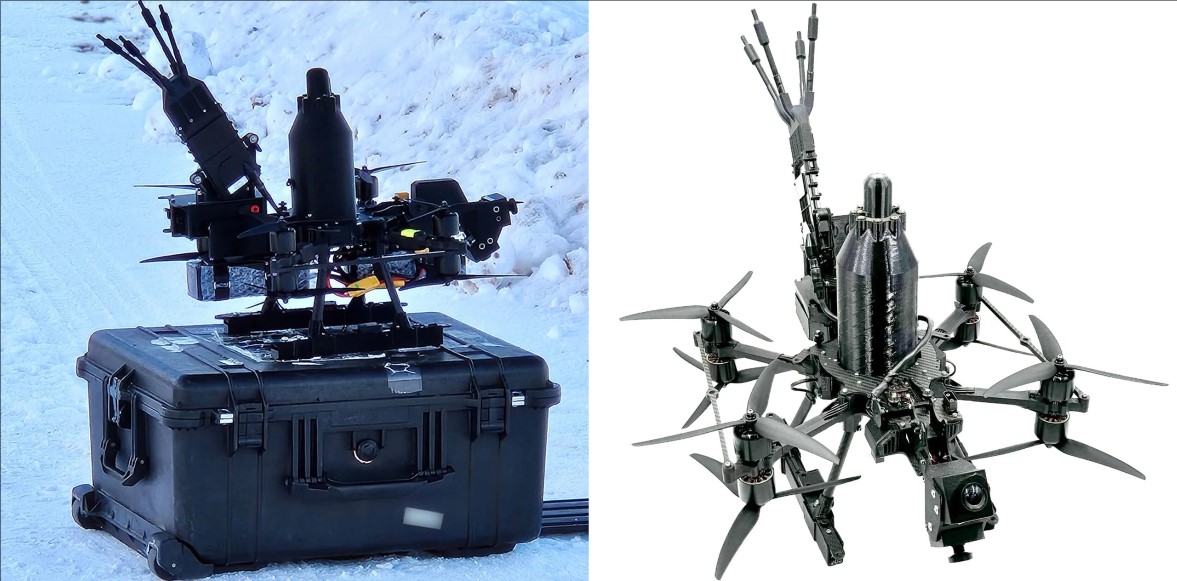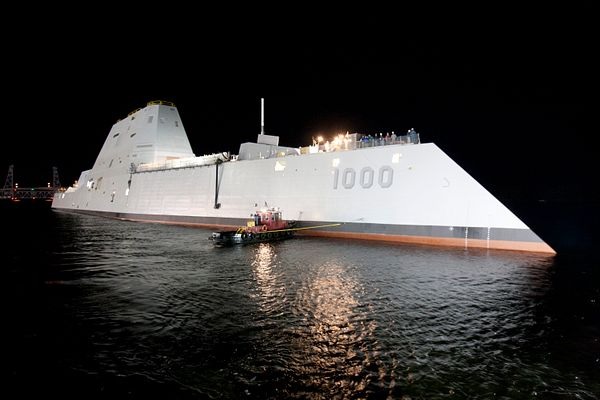China's Mysterious New World’s Largest Uncrewed Submarine

In a move that has left Western analysts in a state of speculation, China has unveiled a new submarine at the Wuchang Shipyard in Wuhan. This development is particularly intriguing as the shipyard is traditionally associated with the construction of Type 039A conventionally powered submarines. The emergence of this new vessel has prompted a flurry of analysis and debate regarding its design, capabilities, and intended role within the People's Liberation Army Navy (PLAN).
Distinctive Design Features
One of the most striking aspects of this new submarine is its adoption of X-form rudders—a first for crewed Chinese submarines. This rudder configuration is known to enhance maneuverability, efficiency, and safety while reducing the vessel's acoustic signature, making it more challenging to detect. Previously, such a design was only observed in China's extra-large uncrewed underwater vehicles (XLUUVs), marking a significant evolution in their submarine design philosophy.
Additionally, the submarine's hull appears to be longer than that of the existing Type 039A Yuan class, which measures approximately 253 feet. Estimates suggest that the new vessel spans between 272 to 279 feet. This extended length has led experts to speculate about potential internal modifications, such as the inclusion of a vertical launch system (VLS) for cruise missiles or advancements in propulsion technology.
Potential Capabilities and Speculations
The elongated hull could indicate the integration of VLS cells, a feature uncommon in conventionally powered submarines. Such an addition would enable the submarine to launch larger cruise missiles, thereby enhancing its strike capabilities. Alternatively, the increased length might accommodate advanced propulsion systems, possibly involving lithium battery technology akin to that used in Japan's latest Soryu class submarines. This would provide the submarine with greater endurance, faster charging times, and reduced maintenance requirements.
Another theory posits that the additional space could house specialized equipment for surveillance or covert operations, suggesting a role in intelligence gathering or special forces deployment. The absence of a sail—a vertical structure typically found on submarines—further fuels speculation about the vessel's intended use and design innovations aimed at reducing drag and acoustic signatures.
Implications for Naval Warfare
The unveiling of this new submarine underscores China's rapid advancements in naval technology and its commitment to expanding and modernizing its submarine fleet. The incorporation of X-form rudders and potential VLS capabilities signifies a strategic shift towards more versatile and stealthy underwater platforms. This development could have significant implications for regional security dynamics, particularly in the South China Sea and surrounding areas.
As China continues to innovate and expand its naval capabilities, neighboring countries and global powers will undoubtedly monitor these developments closely. The introduction of such advanced submarines not only enhances China's maritime power but also adds a new layer of complexity to the strategic calculations of other nations.
In conclusion, while many details about China's new submarine remain shrouded in mystery, its distinctive design and potential capabilities represent a noteworthy leap in naval technology. As more information becomes available, the global community will gain a clearer understanding of how this vessel fits into China's broader maritime strategy and its implications for future naval engagements.


